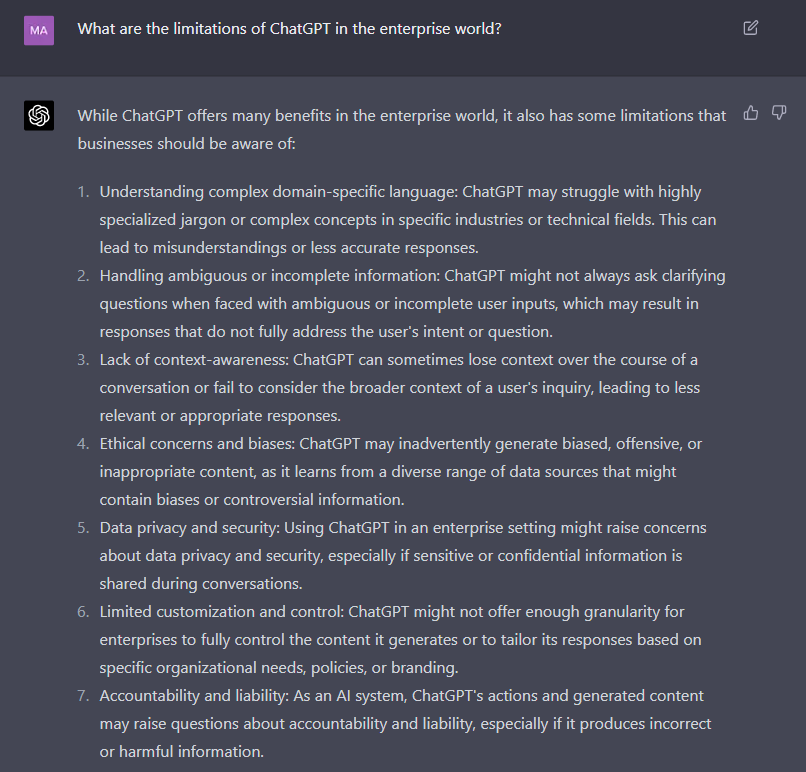The proliferation of chatbots in business has gained substantial traction in today’s business landscape. Irrespective of the interface, be it desktop or mobile, it is highly probable that customers will be met with an AI-powered assistant as their initial touchpoint to a business.
Chatbots provide quick and efficient responses to customer inquiries, freeing up human resources and improving customer satisfaction. However, with the evolution of artificial intelligence (AI), the capabilities of virtual AI assistants have expanded, creating a new breed of automated assistants known as conversational AI assistants. In this article, we will explore this emergent trend, examine the difference between chatbots and conversational AI assistants and underscore the need for businesses to leverage AI-powered assistants in their operations.
The Evolution of Chatbots
Chatbots have been around since the 1960s when ELIZA, a computer program that emulated a psychotherapist, was developed. Since then, they have undergone significant transformations, particularly with the advent of AI. The early chatbots were rule-based and could only provide scripted responses to limited sets of questions. However, with AI, these virtual assistants have become more sophisticated in their ability to understand natural language and provide personalized responses to customers. Today, AI-powered virtual assistants can handle complex conversations and learn from past interactions to improve future interactions.
The Difference between Chatbots and Conversational AI Assistants
While chatbots and conversational AI assistants are both automated messaging tools, there are significant differences between the two. Chatbots are rule-based and only respond to specific keywords or phrases. They are limited in their ability to understand the nuances of human language and provide personalized solutions. On the other hand, conversational AI assistants use advanced AI techniques like natural language processing and machine learning to understand human language and provide personalized solutions to customers. They can also integrate with other systems and platforms to automate workflows and provide seamless customer experiences.
What Is a Conversational AI Assistant?
An AI chatbot is one that enables natural interaction via text, voice, or both, providing instant and meaningful responses. At its core, the bot leverages AI to deconstruct the input, identify the words, sentences, and sentiment, and quickly analyse the context. For instance, when a caller says, “I’d like to book a table for two for dinner,” the bot understands that “book” refers to “reserve” rather than a “publication” and formulates a relevant response and/or follow-up action. Additionally, AI-powered chatbots are designed to deliver personalized, conversational, human-like experiences based on customer preferences and past behaviours.
Along with the AI brain comes the power of memory. The AI chatbot not only remembers previous conversations but also learns from them, continuously improving its performance over time. The more interactions, the smarter the AI chatbot becomes. AI-powered chatbots have several advantages over their non-AI counterparts, enhancing their overall capabilities.
While not always necessary, leveraging AI technology in chatbots has the potential to take customer interactions to a whole new level, including:
- Supporting both voice-based, chat and text-based interfaces within a customizable user interface (UI).
- Integrating with multiple messaging platforms such as WhatsApp, Facebook Messenger, WeChat and more. And based on the business strategy, the bot can be deployed in one or more channels.
- Learning from previous conversations, then recalling and reusing that information in future, relevant conversations (e.g., the customer prefers to be addressed by their first name only).
- Supporting rich input and output. For example, an AI chatbot understands emojis and can send you rich multimedia content in response (e.g., pairs of shoes shown in a carousel).
- Capturing voice, detecting language, transcribing speech to text, and identifying and isolating speakers such as agent vs customer, as well as understanding intent, which is key to understanding who said what.
- Integrating data from other applications or platforms such as CRM, billing, case management, etc.
- Routing requests to a human agent when it cannot understand or handle an intent.
DRUID enables businesses and humans to reimagine what is possible with hyper-automated conversational AI-enhanced with pre-built connectors with any business system or 3rd party platform and on multiple types of channels.
What Chatbots and Conversational AI Assistants Use Cases Exist?
There are multiple industries where conversational AI assistants can be useful, for example:
Retail
In the retail industry, conversational AI assistants can provide personalized product recommendations based on customer history and preferences. They can also automate customer support and sales processes, reducing response times and improving customer satisfaction. For example, a cosmetics retailer launched an AI-powered virtual assistant that can recommend products based on a customer's preferences and previous purchases, providing a deeply personalized shopping experience.
DRUID enable you to provide a superior customer experience while increasing revenue through automation enabled by conversational AI. Deploying conversational AI for retail is a breeze with our solution library, which features over 500 skills available in ready-made templates that cover multiple retail processes.
Healthcare
In the healthcare industry, chatbots and conversational AI assistants can provide medical advice and symptom checking based on a patient's medical history. They can also automate appointment scheduling and prescription refills, reducing the workload of healthcare professionals and improving patient outcomes. For instance, the chatbot can provide personalized medical assessments based on a user's symptoms and medical history, giving users access to medical advice anytime, anywhere, on any device.
Financial Services
In the financial services industry, conversational AI assistants can assist customers with a variety of tasks, including balance inquiries, bill payments, budgeting, fund transfers, and account management. For banks, credit unions, and other financial institutions to be competitive, they must create and maintain a “digital-first” mindset that goes far beyond a simple mobile banking application.
Travel
Conversational AI assistants can be useful in the travel industry for providing customers with real-time flight information, booking flights and hotels, and recommending activities at the travel destination. For instance, a Dutch airline uses an AI-powered virtual assistant to provide customers with flight updates, booking confirmations, and other travel-related information.
Education
In the education industry, conversational AI assistants can be used to provide students with personalized learning experiences and assistance with homework or assignments. For instance, Duolingo's chatbot provides personalized language learning experiences, including grammar and vocabulary lessons.
Insurance
In the insurance industry, conversational AI assistants can be used to help customers with policy inquiries, process claims, provide customers with policy information and other tasks.
Human Resources
Conversational AI assistants can also be used by the Human Resources department to assist employees with benefits enrolment, scheduling, and other HR-related tasks. For example, HR virtual AI assistants can assist job applicants with their job search and application process, providing a more efficient and personalized experience.
As technology continues to evolve, we can expect to see even more industries adopting these tools to improve their operations and provide better customer experiences.
ChatGPT Is an Example of Chatbot Evolution
ChatGPT is an open-source chatbot developed by OpenAI that uses the GPT-3.5 architecture. It is an impressive example of the evolution of chatbots, as they can understand natural language and provide personalized responses to users. However, like other chatbots, ChatGPT has limitations when it comes to enterprise use. It cannot integrate with other systems and platforms, limiting its ability to provide personalized solutions and automate workflows. Whereas conversational business applications platforms, such as DRUID's, can integrate with other systems and platforms, removing any such limitation.

Conclusion
In conclusion, the evolution of chatbots has led to the development of conversational AI assistants that can handle complex conversations and provide personalized solutions to customers. Conversational AI assistants have become crucial tools for businesses looking to automate their operations and improve customer experiences. They are essential for businesses that want to stay current with current customer service needs.
While chatbots and conversational AI assistants are both valuable tools, businesses need to understand the differences between them and their limitations. Rule-based chatbots are limited in their ability to provide personalized solutions and cannot understand the nuances of human language. Conversational AI assistants, on the other hand, are designed to handle complex conversations and provide personalized solutions to customers, making them more suited to enterprise use. DRUID's Conversational Business Applications platform has no such enterprise limitations.
Businesses looking to leverage AI-powered assistants in their operations should consider using conversational AI assistants and conversational business applications. Why? Both can provide personalized solutions to customers, automate workflows, as well as integrate with others systems and platforms. And as the technology continues to evolve, we can expect to see even more sophisticated multimodal conversational, and that will revolutionize the way businesses operate and staff or customers interact with the business.



